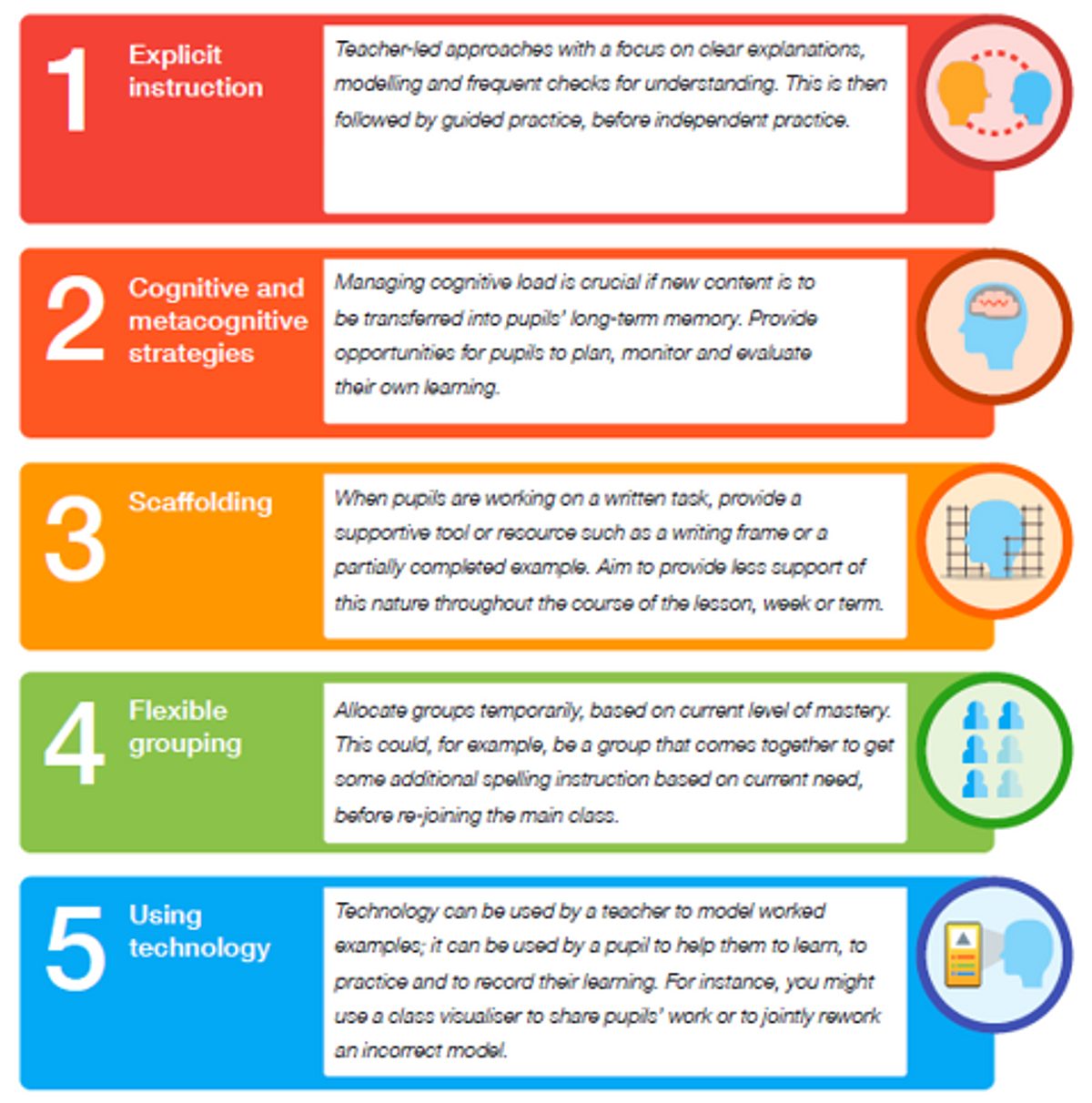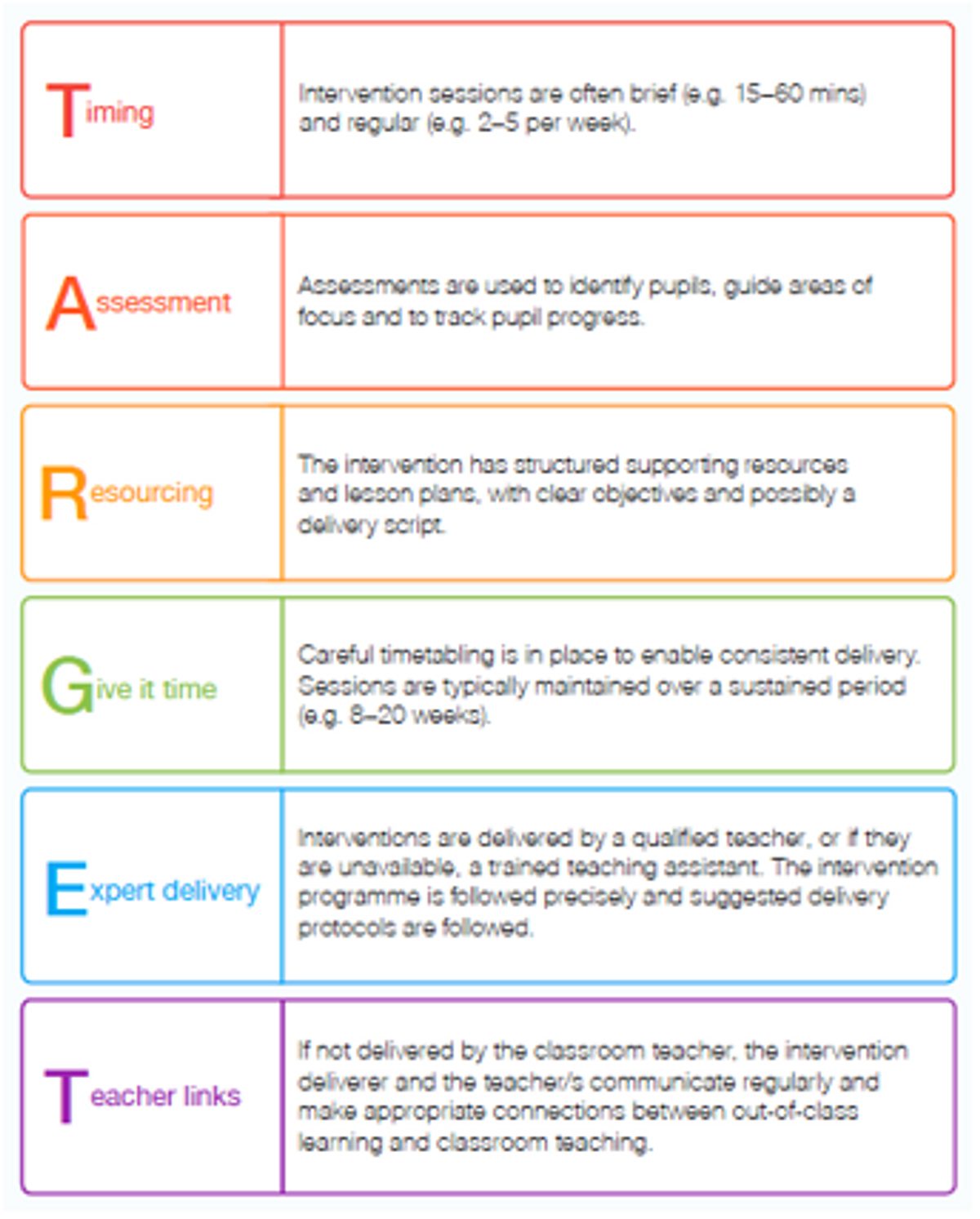

Research School Network: Moving Forwards, Making a Difference: A Summary A summary of the EEF’s new evidence review exploring how to move on following the pandemic
—
Moving Forwards, Making a Difference: A Summary
A summary of the EEF’s new evidence review exploring how to move on following the pandemic
Share on:

by Durrington Research School
on the
Following the coronavirus pandemic, the Education Endowment Foundation have released a document outlining strategies that schools can adopt in the 2022/23 academic year to reduce the impact of the pandemic and aid pupil outcomes. A previous study by the EEF this year concluded that “covid-19-related disruption…negatively impacted the attainment of all pupils, particularly those from socially disadvantaged backgrounds”. There is evidence which suggests that the attainment gap between disadvantaged students and their peers has grown. In addition, evidence shows that students have not been performing as well in maths and reading as pre-pandemic cohorts. Another worrying impact is that on the wellbeing of pupils, evidence suggests the pandemic has had a negative impact on children’s mental health. Whilst all these trends are worrying, there are many strategies that schools can use to try to combat them. The EEF have suggested a three-tiered model of support: high quality teaching; targeted academic support; and wider strategies. My summary will predominantly focus on the first of these tiers.
High Quality Teaching
As has always been the case, “high quality teaching- every day, for all pupils- can and will make a positive difference’. Evidence shows that high quality teaching is the most important factor in improving attainment outcomes, particularly for disadvantaged students. The EEF suggest four ways of maximising teaching quality:
1. High quality daily teaching (using the 5 a day model below)
2. Focus on improving literacy and mathematics outcomes (The EEF have released multiple studies explaining how to do this)
3. Using diagnostic assessment to address learning gaps; and
4. Securing professional development.

Many elements of this list will be familiar, as they link in with our 6 principles we have here at Durrington. The third strategy of scaffolding is particularly important as it cultivates independence within learners. In maths, we have recently begun to annotate home works with helpful tips, for students we have identified as needing extra support when working independently. Crucially, it is important that any scaffold used should be adapted over time, and ideally removed once the student has mastered the concept.
Many of the technological strategies we had to learn as part of teaching remotely, such as creating loom videos, are still a really valuable resource for students to aid their independent learning. Another strategy that became more prevalent during online learning was the use of a visualiser. In the classroom- using a visualiser can be incredible beneficial for students to witness first hand a model answer, or how to spot and correct mistakes/misconceptions, for example.
Using diagnostic assessment to address learning gaps is another essential part of high-quality teaching. When assessing students, teachers should make sure to carefully consider what information they wish to gather and how the data will inform their future teaching, whether that means they adjust their level of challenge, reteach certain topics/concepts, adjust the curriculum, or identify students which needs additional support. Diagnostic assessments can take many forms including; hinge questions, low stakes quizzes, pre-topic mind maps, use of mwbs etc.
Professional development is another key part of encouraging high-quality teaching. The EEF have a document on Effective Professional Development which focuses on: building knowledge; motivating teachers; developing teacher techniques; and embedding practice. Evidence suggests that including at least one of these in every professional development activity will have a lasting impact.

Targeted Academic Support
Research suggests that academic support should be targeted towards the individual needs of students and interventions should be put in place to complement in-class teaching. The “flexible grouping” strategy in the diagram above suggests that temporary groups should be put in place, based on their current level of mastery, to support and strengthen their understanding. The EEF suggest following the “target” approach as outlined below:

There are huge benefits to extra intervention. EEF evidence suggests that tutoring (either 1:1, peer tutoring, or small group tuition) can have 4 – 5 months individual progress.
Wider Strategies
The wider strategies focus on the non-academic barriers including attendance, behaviour, routines and relationships. The EEF state that prioritising wider strategies, such as routines, can be key for the wellbeing and attainment of all pupils but will be especially important at transition points such as moving between classrooms, or entirely new settings. This has a particular impact on pupils with SEND and those with disadvantaged backgrounds.
To summarise, there are some clear themes stated in this report. To close the attainment gap, teachers should focus on a mastery-approach and regularly assess students’ understanding to identify how far they are along in mastering the concept (for more information on how to adopt a master approach in your teaching, please refer to Deb Friis’ blog from a few weeks ago). After identifying specific weaknesses, tailored intervention should be implemented to help close any gaps of learning. Tasks should be scaffolded to the individual and scaffolds should be taken away as the student progresses and improves. Teachers should ensure that instruction is explicit, and be mindful of the cognitive load of their students. Technology should be used, where effective, to aid in-class teaching and to support independence with home work. The overarching focus here is that we as teachers should be thinking deeply about how we can support students whilst ensuring we are encouraging them to be self-regulating learners.
Zofia Reeves is a Maths Teacher and Research Associate at Durrington High School
More from the Durrington Research School
Show all news

The Evidence Base behind Attendance Interventions
The importance of attendance means that there is a growing demand for a review of the research into attendance interventions.

Metacognition and self-regulation in geography
Head of geography Sam Atkins explains how he has been helping students develop their metacognitive regulation .